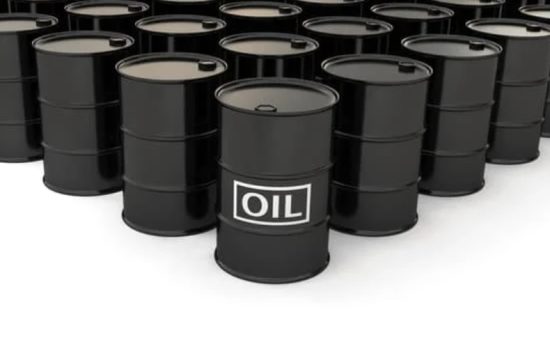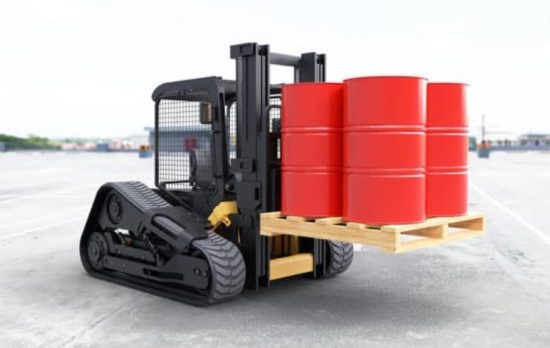Canada is known for its oil production, but did you know that it also imports oil from other countries? Russia, for instance, is one of the major sources of Canada’s imported oil. With a vast amount of oil reserves and advanced extraction technologies, Russia has become an attractive supplier for many countries in need of petroleum products. In this blog post, we’ll explore how much oil Canada imports from Russia and why it chooses to do so. We’ll also delve into the different types of oil that Canada purchases from Russia and examine the risks associated with importing such a valuable resource from abroad. So buckle up and let’s dive in!
Overview of Canada’s Oil Imports

Canada is one of the world’s largest producers of oil, but it also imports a significant amount from other countries. Canada imported about 620,000 barrels per day of crude oil and petroleum products in 2020. The United States is by far Canada’s biggest supplier, accounting for nearly two-thirds of all imports.
Despite its abundance of natural resources, Canada still relies on foreign sources to meet its energy needs. This is partly because Canadian refineries are not equipped to process certain types of heavy crude oil produced domestically.
In addition to the United States, Canada also imports oil from other countries such as Saudi Arabia and Nigeria. However, Russia has become an increasingly important player in recent years.
While Canada may be a major producer of oil itself, it still depends heavily on foreign sources to keep its economy running smoothly.
Why Does Canada Import Oil From Russia?
Canada is a country rich in crude oil reserves, so why does it need to import oil from Russia? The answer lies in the fact that Canada’s domestic production cannot meet its energy demands. Canada’s reliance on imported oil has been increasing steadily over the years due to declining production from mature fields and delays in pipeline infrastructure projects.
Furthermore, Canada imports heavy crude oil from Russia because of its unique refining capabilities. Canadian refineries are designed to process heavy crude oils like those found in Alberta’s oil sands, which have similar characteristics to Russian crude oils. This means that importing Russian heavy crude can complement Canadian production and help maintain optimal refinery operations.
Another reason for importing Russian oil is the economic benefits it provides for both countries. By trading with each other, both nations benefit from access to new markets and diversification of their economies. Moreover, importing less expensive foreign oil allows Canadian businesses and consumers access to cheaper energy sources while supporting local jobs.
There are various reasons why Canada imports some of its oil needs from Russia despite being an energy-rich nation itself. As global demand continues to increase and domestic resources decline, strategic partnerships such as this one will likely become more common in the future.
How Much Oil Does Canada Import From Russia?

Canada is a major player in the global oil market, but it still imports significant amounts of crude oil to meet its energy demands. Russia is one of Canada’s key suppliers of crude oil, and the two nations have been trading for years. In 2020, Canada imported around 16 million barrels of crude oil from Russia, which accounted for about 2% of its total crude oil imports.
The main reason why Canada imports Russian crude is due to its geographic proximity to Eastern Europe. It makes sense for Canadian refineries on the East Coast to secure their supply chain with Russia since it’s easier and cheaper than sourcing from other parts of the world like Asia or Africa.
Russia exports a variety of oils such as heavy sour crudes used by Canadian refineries that are designed for processing this type of feedstock while accommodating lower-quality blends coming in via pipeline or tanker shipments.
However, there are risks associated with importing oil from Russia including political instability and economic sanctions that could disrupt supply chains leaving refiners scrambling for new sources if they can’t get enough supplies through domestic production or other foreign sources.
Despite these risks, prospects appear positive as long as both countries continue their strong trading relationship.
What Types of Oil Does Canada Import From Russia?
Canada primarily imports two types of oil from Russia – heavy crude and light crude. Heavy crude is a dense, thick oil that requires more processing to convert into usable products such as gasoline and diesel. This type of oil is typically used in industrial applications, including power generation and manufacturing processes.
On the other hand, light crude contains less sulphur than heavy crude and can be processed more easily into refined products like gasoline and jet fuel. It’s also often used for home heating purposes since it has a lower viscosity than heavier oils.
Despite the differences between these two types of oil, Canada relies on both to meet its energy needs. In recent years, however, there has been a shift towards using lighter crudes due to their lower greenhouse gas emissions.
While importing Russian oil may provide Canada with an affordable source of energy in the short term, there are concerns about the environmental impact associated with transporting it across vast distances. As such, many are calling for greater investment in domestic renewable energy sources to reduce reliance on imported fossil fuels over time.
Risks and Challenges Associated With Importing Oil From Russia to Canada
Importing oil from Russia to Canada poses several risks and challenges.
- One of the primary concerns is the political instability between the two countries, which can result in trade restrictions or sanctions that may affect oil imports. Additionally, importing oil from a country with a questionable track record on human rights and environmental protection could cause reputational damage to Canadian companies.
- Another risk associated with importing Russian oil is its transportation. Shipping crude through tanker vessels across long distances increases the likelihood of accidents, such as spills or leaks, which can have devastating consequences on marine life and coastal communities.
- Moreover, there are economic challenges related to importing Russian oil to Canada. Fluctuating prices due to market volatility can impact both buyers and sellers negatively. Moreover, geopolitical tensions like those currently experienced between Russia and Ukraine or other nations could lead to supply shortages making it challenging for Canada’s energy industry.
- Climate change policies being implemented by global leaders seeking net-zero emissions mean that Canadian industries relying heavily on imported fossil fuels will have limited access to future markets if they do not shift towards renewable resources soon enough.
While importing Russian oil might be beneficial at present; however it comes with significant risks too – politically unstable relations jeopardize trade agreements; environmental hazards exist during transportation whilst fluctuating prices coupled with climate policy changes pose economic threats thus requiring an urgent need to pursue alternative energy sources.
Prospects of Canada’s Oil Imports From Russia

Despite the challenges associated with importing oil from Russia, Canada’s prospects for oil imports from this country remain optimistic. One major factor that supports this outlook is the increasing demand for energy in Canada. As the economy continues to grow and more people move into urban centers, Canadian consumption of oil is expected to rise.
In addition to rising demand, technological advancements are also likely to play a role in increasing Canada’s ability to import oil from Russia efficiently. For example, improvements in transportation infrastructure such as pipelines and rail networks could help reduce costs associated with transporting Russian crude oil across longer distances.
Furthermore, recent geopolitical developments have made it clear that diversifying sources of energy imports are becoming increasingly important for countries like Canada. With tensions between other major suppliers such as Saudi Arabia and Iran on the rise, maintaining a relationship with Russia may be seen as strategically valuable.
While there are certain risks and challenges involved in importing oil from Russia to Canada, it seems likely that these will be outweighed by the potential benefits over time. As long as both nations continue working towards building strong partnerships based on mutual benefit and trust, there is reason for optimism regarding prospects for Canadian-Russian energy trade relations.
Conclusion
To sum it up, Canada is a major importer of oil and has been diversifying its sources to ensure energy security. Although Russia’s oil exports to Canada are relatively small compared to other countries, they still play an important role in meeting the country’s energy needs.
The types of oil imported from Russia vary but include crude oil and refined products like diesel and gasoline. However, there are risks associated with importing from Russia due to geopolitical tensions and concerns about environmental standards.
Despite these challenges, the prospects for Canada-Russia energy trade remain positive as both countries seek opportunities for cooperation. As long as the demand for fossil fuels remains high, imports will continue to be an important part of Canada’s energy mix.
While the amount of oil that Canada imports from Russia may not be significant compared to other nations, it is still an important contributor to the country’s overall energy supply. Policymakers and stakeholders alike must consider both the benefits and risks associated with this trade relationship when making decisions about future energy policy.










